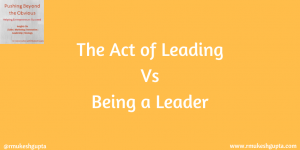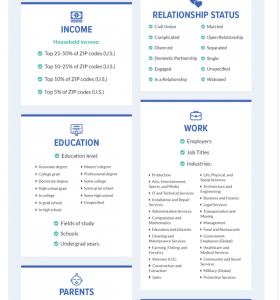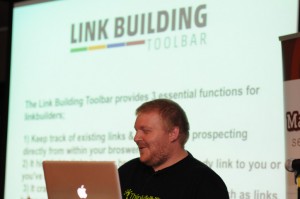
Spam penalization is no myth. Organizations whose websites are perceived as untrustworthy by Google can experience a sudden drop in rankings. For brands of all sizes, this drastic drop can cause a serious and instantaneous drop in revenue.
By expert estimates, Google’s search algorithm takes at least 200 factors into account when ranking sites in search results. Following the recent Mobilegeddon algorithm deployment, your brand could rank very differently in searches performed on a mobile device than it does for desktop. Variables that affect ranking span from domain factors, page-level factors, site-level factors, backlink factors, and user interaction (which includes social media shares and other social signals).
While the actual, comprehensive list of search factors is closely guarded by Google, the SEO industry has come at least somewhat close to identifying variables and relative weights. If you’re looking for a deep dive into the state of search engine optimization in 2015, including proven variables and expert speculation, we recommend Backlinko’s recently-updated Google’s 200 Ranking Factors: The Complete List.
How Big Of A Deal Is Spam Penalization?
To be honest? It’s rather big. As search engine algorithms become more sophisticated, Google’s become more savvy to a wide array of signals that can indicate a untrustworthy website. In the last month, Moz announced the release of Spam Score, a long-term research development project aimed with understanding the most common spam risks.
Moz’ data science team lead by Dr. Matt Peters identified a total of 17 factors that can affect your chances of spam penalization. While each of these 17 factors isn’t weighted equally, you can think of each one as a flag. If your site raises enough flags, you’re penalized. Fourteen or more flags carries a 100 percent chance of penalization. These factors include the following:
Low-Quality Inbound Links: Sites with excessive inbound links from low-authority domains can raise flags.
Large site with few links: If your site has a ton of pages and only a few inbound links, it can be a sign of low-quality content generated just for keyword optimization.
Site link diversity is low: Strive for links from a wide variety of domains in your niche.
Ratio of followed to nofollowed links: If your followed links far exceed your nofollowed, it can be a sign of spam.
Small proportion of anchor text: Fake backlinks are often built with less anchor text than that which occurs when links are built naturally.
Thin content: Do your web pages average just 200-300 words each? This could be perceived as low-value by search algorithms.
Site mark-up is abnormally small: If your site’s markup is extremely minimal, it can be the sign of the barebones user experience common among spammers.
Large number of external links: Could it appear that your site pages merely exist to support tons and tons of outbound links?
Low number of internal links: Ensure your navigation, content marketing, and web pages link naturally to other pages on your site.
Anchor text-heavy page: Hiding excessive keywords and content in anchor text can be a surefire sign of deliberative link-building efforts.
External links in navigation: External links in your navigation or sidebar menus might not contribute positively to your user experience, and could be perceived as unnatural.
No contact info: Ensure your contact information is prominently displayed.
Low number of pages found: Few normal websites can get away with just one to two web pages.
Top-level domains correlated with spam domains: Certain top level domains can be associated strongly with spammers.
Domain name length: If your business name is long, it’s probably not a problem. However, highly specific and long domain names like keywordstuffingseospecialistsindenver.com can seem like a deliberative attempt at exact domain match SEO.
Domain name contains numerals: One or more numerals isn’t necessarily a bad thing. However, any domain that seems automatically-generated could raise a flag.
While these factors are included in Moz’ new ranking algorithm, there are other activities your brand can take on page that could drastically decrease your website’s trustworthiness. In essence, if your organization is doing something for the sheer benefit of search rankings (as opposed to your user experience), it might be spam. The following old-school, black hat SEO tactics will do absolutely no favors for your website’s trustworthiness:
- Header Tag Stuffing: Google’s natural language processing capabilities improve each year. They’ll likely notice if your content tends to contain awkward header tags that exist for the sole purpose of containing keywords.
- Affiliate Sites: While Backlinko’s search rankings report admits this is expert speculation, heavy usage of affiliate site marketing can be perceived as unnatural or detrimental to a positive web experience.
- Auto-Generated Content: In the future, machines may be able to create content as effectively as humans. However, few organizations currently have this technology in place. Attempting to boost your content publication rate by using robots to write blogs isn’t going to slip under the radar.
- IP Address Spam Flags: All sites hosted on an IP address that is flagged for Spam will be subject to extra scrutiny and potential SEO penalization.
- Excessive Pop-Ups: Pop-ups certainly carry their fair share of scrutiny among inbound marketing specialists and web developers. They’re not necessarily bad, but they can quickly become overtly disruptive and obnoxious to website visitors. Err on the side of extreme caution when integrating pop-ups into your website.
- Links To Off-Color Websites: Unless your organization is also in one of these industries, linking to websites with adult content, pharmaceuticals, or payday lending can raise at least a few eyebrows.
What To Do if You’re Concerned About Your Spam Risk:
If your business has been online for years and you’re concerned that you’ve engaged in questionable SEO tactics in the past, it’s smart to take action soon. Black hat SEO tactics from years past could cause you to suffer now or in the future, which is why you should invest in immediate damage control and clean-up.
A baseline measurement of your site’s spam risk should include a thorough website and backlink audit to ensure you’re not guilty of any spam-worthy behavior. Enhance thin content, ensure your contact information is up-to-date and prominent, and remove any SEO actions that are more likely to hurt than help.
Were you surprised at any of these risks and flags for spam penalization? Share your thoughts in the comments!
[Photo Credit: Christian Barmala]
(279)








